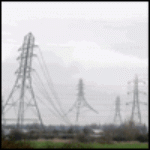Favorite Silmic II film bypass? Size & Sonics?
100.14.96.92 |
||
| Posted on December 19, 2016 at 09:05:57 | ||
|
Posts: 1003
Location: PA Joined: November 24, 1999 Contributor Since: January 18, 2009 |
I realize this is a very subjective question but am wondering what people like for Elna Silmic II film bypasses when used as coupling caps. Cost isn't a consideration, but there are some size limitations. Aiming for an open airy sound stage that's transparent with just a touch of liquidity. Bypass value would be in the .01 to .1uF range. After several tries, I've got something that sounds very good, but am curious what others might suggest. Also, generally, do you find that increasing the uF of the bypass cap increases it's impact on the overall sonic result? It seems that way to me. Happy holidays! |
|


